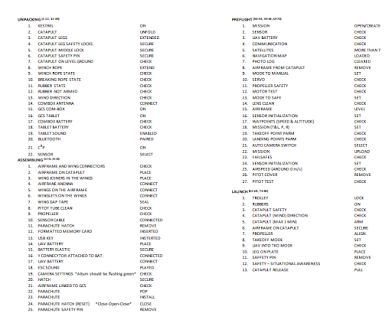Introduction:
In this week’s lab we flew two flights over the
Martell forest area, one with the Bramor and one with the M600. Our objectives
with the Bramor flight were to begin mapping the Martell forest area with the
RGB sensor on the Bramor and a separate mission with the M600 was designed to
test on of our PHD students’ systems for S&R operations. With this as a
backdrop our class was divided into our flight crews and given various tasks to
assist with during the operations. This included recovery teams, data handling
teams, and two flight teams (one for each aircraft). Tangentially to this we
were to observe and note the metadata for the two flights and the various
processes used by the flight crews for crew resource management (CRM).
Overview:
After we were briefed on pour flights and roles by the
professor, we traveled to the mission area near the northern edge of the
Martell forest area. Initially I was supposed to be part of the recovery team
for the first mission, but my roll was changed to fill the role of an absent
student. I was now to be the Sensor Operator (SO) of the Bramor flight. The
process of setting up the area for the mission was a good practice for how we
use CRM to safely and efficiently run our missions. Starting with unpacking the
drone we use the crates that the Bramor is transported in to demarcate our
flight line. Once the crates are open and the drone is on the catapult, no
non-essential personnel, even those in the flight crew are to enter the flight
line in order to minimize risk of injury or damage and to ensure the PIC and FO
have ample space to work and no distractions.
Once the Flight line was established our flight crew
began assembly of the drone and catapult, we used a call and response system
(or “say and do”) of communication to go down our preflight checklist. This was
accomplished by our PIC and FO. With the checklist completed the mission began.
The Bramor flight went smoothly and the recovery was accomplished without
issue. The only hiccup in the operation was that the computer we brought out to
the field for data processing couldn’t really handle the volume of data we had
collected during the flight. The metadata for this first flight is recorded
below.
Flight 1 Metadata:
Location: Martell
Forest
Date: 9/1/2020
Vehicle: C-Astral
Bramor PPX
Sensor: Sony X1
Battery: 3 and 4
Approval Number: 1
Takeoff Time:
11:04 AM
Landing Time:
11:49 AM
Altitude (m): 152
Sensor Angle:
NADIR
Overlap: 80%
Sidelap: 80%
Airframe Time: 46
mins
Photos Taken: 1131
Distance Traveled:
47.5 km
Datalog: 1
Crew:
PIC: Kaleb Gould
FO: Jeff Hines
SO: John Cox
VO: Zack Miller
Our second flight
of the day was with the DJI M600. This flight was to find a simulated missing
person in the forest. However, this flight had to be aborted soon after launch
due to worsening weather conditions. The metadata for this flight is recorded
below:
Flight 2 Metadata:
Location: Martell
Forest
Date: 9/1/2020
Vehicle: DJI M600
Sensor: Sony A6000
Battery: Yellow
Approval Number: 1
Takeoff Time:
12:15 pm
Landing Time:
12:37 pm
Overlap: 80%
Sidelap: 80%
Conclusions:
CRM plays a huge role in how we conduct operations.
There are four main concepts that we integrate into our CRM which are:
1_Clearly defined and assigned roles for crew members and a summary of duties
for each role. 2_Integration of established checklists. 3_Commmunications
strategies. And 4_Emergency Procedures. I briefly mentioned these in my
previous post but now I have examples of each of these core concepts from this
week’s mission to share. Starting with clearly defined assigned roles and
duties. All members of our flight crew were assigned our roles prior to the
meeting and reviewed the assigned duties of our respective roles. For myself, I
was assigned the role of sensor operator and my duties primarily focused on the
collection and storage of the data to be gathered during the flight. In this
particular instance once the storage disk was formatted and installed in the
aircraft there was little for me to do during the actual flight as the Bramor
automated the actual senor operations during the flight. However, once the
flight had concluded I was responsible for handing off the data to the
processing team.
Checklists have always been a cornerstone in aviation
operations and UAS is the same. In this instance our PIC and FO had to follow a
preflight checklist, this you can see in the figure below:
Figure 2: Bramor Preflight Checklist
I want to point out that the way this checklist is laid out facilitates
another core concept of our CRM which is the effective communication strategy.
Our checklist uses the call and response or “say and do” method whereby the PIC
reads off the points on the checklist in order and the FO preforms the action
and responds with the appropriate response in the right-hand column. These two
concepts are essential to quick and effective communication and are one of the
things that elevates our operation. The last core concept is emergency
procedures which, fortunately, I do not have an example to share with you. But
this is a preestablish set of actions that account for the most likely
emergency scenarios. For our setting we define these as: Loss of GPS signal,
Loss of visual contact with the aircraft, loss of control, approach by a manned
aircraft, and bird strikes. Each of these has its own set of responses that I
will cover in more detail at a later date.


No comments:
Post a Comment